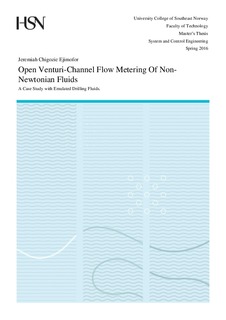| dc.description.abstract | In the oil and gas industry, controlling the well pressure is a very important aspect of drilling, thus drilling fluids has been the forefront aspect in drilling operation, thereby acting as a barrier against hydrocarbon blowout. In controlling the well pressure, recent study have revealed that measuring the flow rate of the drilling fluid flowing out from the well is the best method for early kick detection or well breathing. However, since most drilling fluids are non-Newtonian in nature, this study is focused on using open channel venturi as a stand-alone flow meter for non -Newtonian fluids, commissioning test of newly installed Coriolis flow meter and comparing with previous installed Coriolis flow meter based on experimental data for Newtonian and non-Newtonian fluids.
In this study, two empirical models were developed; the first model used the partial least square method in multivariate data analysis to find the linear relationship between mass flow rate and other inputs variables such as density, pressure, temperature, differential pressure and the level measurement at the open venturi channel. The result from this model revealed that density, differential pressure and the three level measurement at the open venturi channel were the most important variables to estimate mass flow rate. Based on the information from the first model, the second model was developed using an artificial neural network which estimated mass flow rate with an estimated error of 4.14kg/min.
The result from the commissioning test of the newly installed Coriolis flow meter in USN, based on experimental data for Newtonian and non-Newtonian fluids shows that the position of the sensor which is very close to a bend is creating a turbulent flow. Fluids which has the characteristics of generating bubbles are affected by this problem, thus producing more errors for the flow meter. The study also reveals that the flow meter cannot measure the viscosity of non-Newtonian fluids. | nb_NO |
